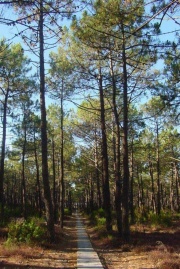Difference between revisions of "Galipot"
Jump to navigation
Jump to search
(username removed) |
(username removed) |
||
| Line 8: | Line 8: | ||
== Synonyms and Related Terms == | == Synonyms and Related Terms == | ||
| − | ''Pinus pinaster''; | + | ''Pinus pinaster''; résine de pin, résine (Fr.); resina de pino (Esp.); gallipot; yellow pitch; white pitch; Burgundy pitch |
== Authority == | == Authority == | ||
| − | * | + | * Ralph Mayer, ''A Dictionary of Art Terms and Techniques'', Harper and Row Publishers, New York, 1969 (also 1945 printing) |
* ''The American Heritage Dictionary'' or ''Encarta'', via Microsoft Bookshelf 98, Microsoft Corp., 1998 | * ''The American Heritage Dictionary'' or ''Encarta'', via Microsoft Bookshelf 98, Microsoft Corp., 1998 | ||
Revision as of 06:43, 24 July 2013
Description
A thick, oleoresin obtained from the cluster pine tree, Pinus pinaster, native to southern Europe. Galipot is similar to Venice turpentine and can be distilled to produce turpentine.
Synonyms and Related Terms
Pinus pinaster; résine de pin, résine (Fr.); resina de pino (Esp.); gallipot; yellow pitch; white pitch; Burgundy pitch
Authority
- Ralph Mayer, A Dictionary of Art Terms and Techniques, Harper and Row Publishers, New York, 1969 (also 1945 printing)
- The American Heritage Dictionary or Encarta, via Microsoft Bookshelf 98, Microsoft Corp., 1998
- Art and Architecture Thesaurus Online, http://www.getty.edu/research/tools/vocabulary/aat/, J. Paul Getty Trust, Los Angeles, 2000
- Wikipedia, the free encyclopedia, at http://www.wikipedia.com Comment: http://en.wikipedia.org/wiki/Galipot (Accessed Jan. 25, 2006)
